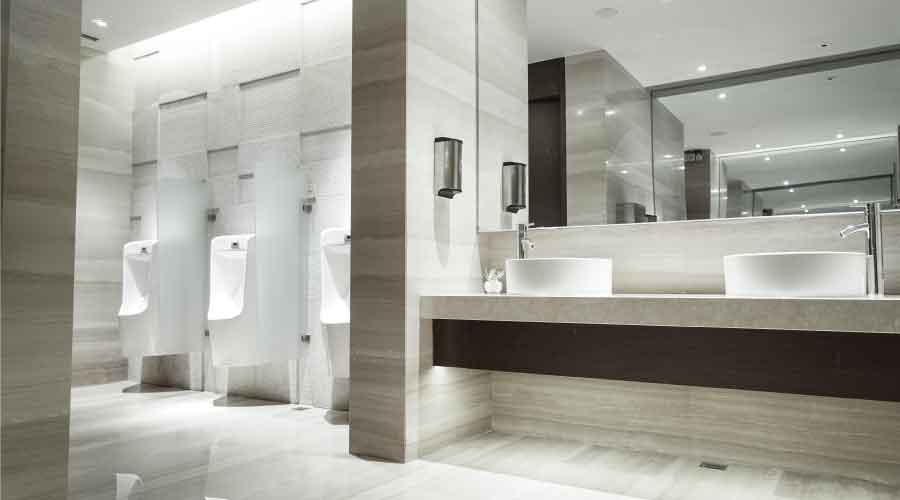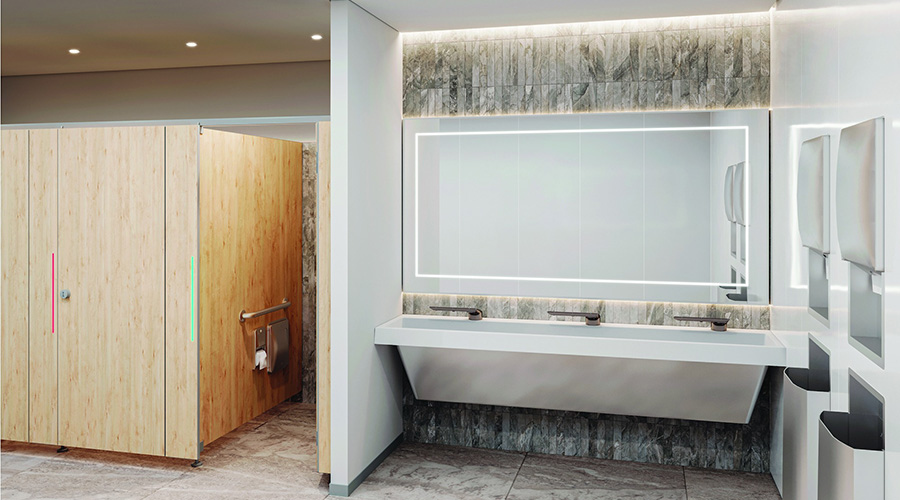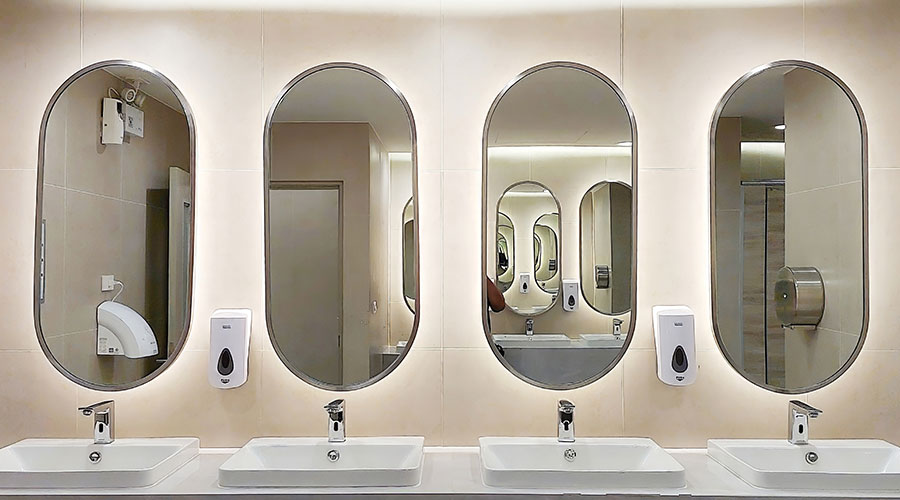Cost Effective Enhancements for Restrooms
Some new technologies that also offer cost-effectiveness for restrooms.
While sensor-activated restroom features and innovative design elements sound appealing, they also can enhance a facility’s bottom line. As Marencic explains, any new technology or product will require an up-front investment by the owner that will need to be managed by the facility manager and the IoT consulting company.
Some of these new technologies that also offer cost-effectiveness include smart chemical dispensers, which are connected chemical dispensers for laundry facilities, that can report data related to chemical and water consumption, machine operating hours, triggered alarms, and more. In addition, robotic floor care machines follow customized maps to clean restroom floors while employees work on other key cleaning tasks.
“Sonar and lidar sensors ensure that these machines avoid obstacles like walls, staircases, and people as they autonomously clean,” Marencic explains. “Meanwhile, managers receive alerts when cleaning tasks are complete or when machine tanks need refilling. Automatic floor care machines can save up to 80 percent on labor costs and use up to 85 percent less water and chemicals.”
Westerkamp adds that properly designed, locked, and protected by alarms, dispensers are more sanitary and less vulnerable to tampering. “Properly metered faucets, towel dispensers, and toilet paper dispensers, soap dispensers, and antiseptic dispensers also eliminate product waste,” Westerkamp says. “They also reduce inventory needs and associated costs. These savings in products and water use provide the savings versus cost trend analysis for management. Each month trend charts are prepared showing total cost and cost by product, so management can see how well resources are managed.
Looking Ahead
High-quality design is a harbinger for long-term facilities improvement and positive change. “It’s the best advertising for how facilities can embrace new technology; it makes the unseen advantages visible and enhances the overall customer or guest experience,” Marencic says. “Good design is evocative—it provides an image for newsworthy content.”
Westerkamp adds that custodial effectiveness is a game you do not want to lose. Now industrial hygienists are hired to test air and surfaces in restrooms for presence of microbes. This includes testing for COVID.
“And in addition to liquid soap dispensers, more liquid antiseptic dispensers are used, especially in healthcare facilities of all kinds – doctors' offices, clinics, and hospitals. Also, adenosine triphosphate (ATP), present in all living matter, in test kits will be more often used to sample surfaces,” Westerkamp says. “The samples are sent to a lab where the microorganisms that caused the reaction in the samples are identified. An absence of the microbes is a quality assurance indicator that custodial practices are effective.”
Westerkamp also says that more and more facility managers will embrace innovative products and methods that will further enhance the efficiency of maintaining the restroom environment, while also keeping them clean and functional. For example, combined sanitary product and anti-microbial, puncture and tear-proof disposal bags for stall partition or restroom walls make disposal more sanitary and prevent toilet clogs.
Also, sensors for water fixtures and toilets not only reduce cross-contamination, they also allow management to decrease usage, locate leaks, and track usage trends.
“These trends can vary up and down as building occupant numbers vary. Sensors that detect motion and turn faucets on and off will also track water consumption and detect leaks by source, making location and elimination of water and waste water losses quicker and easier,” Westerkamp says. Of course, knowing quickly when a leak starts through better metering will reduce water and waste water and save twice the money, both water in and waste water out.
Finally, Westerkamp expects more use of under-sink heaters to provide hot water at the faucet without having to waste water by running it into the drain until the water is hot enough.
“Water and waste costs keep increasing, so the cost of heating the water is becoming more cost effective considering resulting savings in lower water and waste costs,” Westerkamp says. “Management will make use of sensor systems more and more for real-time feedback via IoT through the cloud, internet, or private network.”
Maura Keller is a freelance writer based in Plymouth, Minnesota.
Related Topics:













